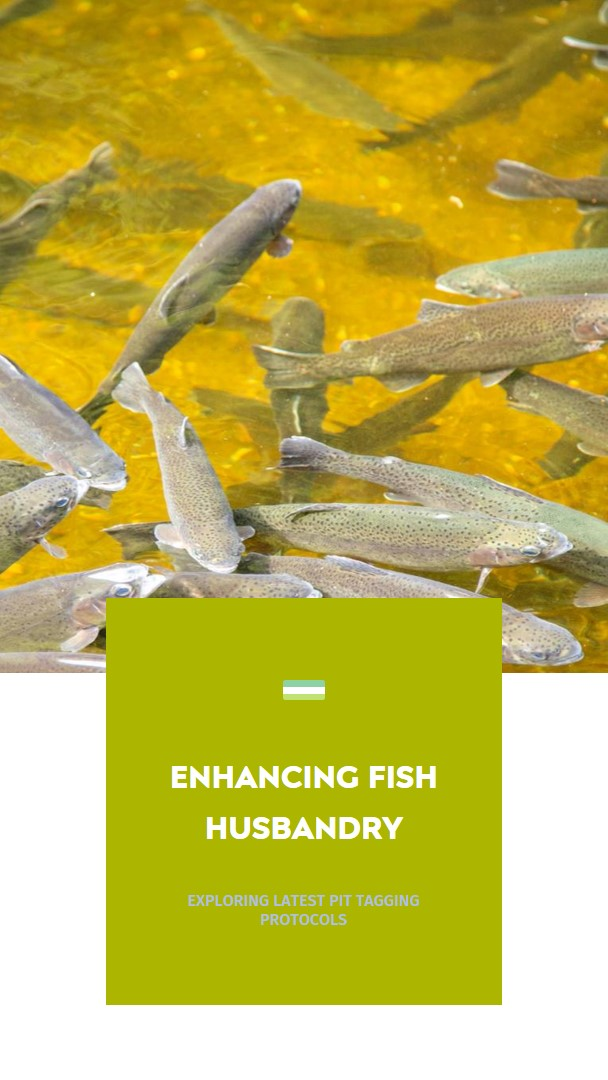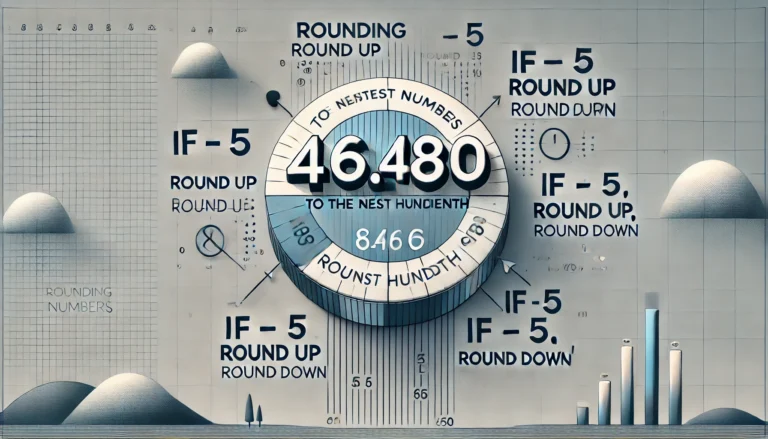
Fish husbandry plays a pivotal role in both sustainable aquaculture and scientific research. As we aim to protect and manage aquatic species, the need for efficient tracking methods has grown. Passive Integrated Transponder (PIT) tagging has emerged as a revolutionary tool in this field, providing precise data for monitoring fish behavior, health, migration, and population dynamics. With technological advancements, new protocols for implementing PIT tag are shaping the future of fish husbandry. This article explores the latest protocols for PIT tagging and its transformative impact on fish farming and research.
What is PIT Tagging?
PIT tagging involves implanting a small, microchip-based tag into fish. These tags store a unique identification code, which can be read using a specialized scanner. The tag itself is biocompatible and safe for fish, making it a reliable method for long-term monitoring without causing harm. When a fish swims past a reader, the PIT tag transmits its data, allowing researchers or fish farmers to track individual fish over time.
Why PIT Tag is Crucial for Fish Husbandry
As aquaculture continues to expand, managing fish populations effectively is essential for ensuring sustainability. PIT tags provide a non-invasive and accurate way to track fish behavior, enabling farmers and researchers to make data-driven decisions regarding breeding, feeding, and migration patterns. By using PIT tag, fish farmers can enhance productivity, improve stock management, and ultimately reduce environmental impact.
Moreover, in marine research, PIT tag is invaluable for studying species migration, breeding habits, and population changes. It offers insights that help improve conservation efforts and protect endangered species.
Key Benefits of PIT Tagging in Fish Husbandry
- Accurate Data Collection: PIT tags offer real-time data on fish movement, health, and behavior.
- Long-Term Monitoring: Unlike external tags that may fall off, PIT tags are implanted beneath the skin, ensuring long-lasting durability.
- Reduced Handling Stress: Once implanted, PIT tags minimize the need for repeated handling of fish, reducing stress and potential injury.
- Individual Identification: Each fish can be tracked individually, offering granular data for breeding and health monitoring.
- Sustainable Practices: By tracking growth and survival rates, fish farmers can adopt more sustainable aquaculture practices.
The Latest Protocols for Implementing PIT Tag in Fish Husbandry
As the demand for more efficient and accurate tracking grows, new protocols for PIT tag are being developed. These protocols aim to standardize procedures, improve tag performance, and ensure the welfare of tagged fish.
1. Tagging Fish at Optimal Size
One of the latest protocols emphasizes tagging fish at the right size to ensure safety and tag retention. Fish that are too small may face complications due to the size of the PIT tag, while larger fish may be better equipped to handle the tagging process. Current recommendations suggest tagging fish when they reach a size of at least 60 mm in length, which is suitable for most species.
2. Sterilization of PIT Tags
Before PIT tags are implanted, they must undergo thorough sterilization to prevent infection. Protocols now recommend using a combination of chemical sterilization (e.g., ethanol) and autoclaving to ensure complete disinfection of the tags. This practice has significantly reduced the risk of post-tagging infections and ensures the long-term health of the fish.
3. Anesthesia Protocols for Fish Welfare
To minimize stress and injury during the tagging process, new anesthesia protocols are being implemented. Fish are sedated using substances like tricaine methanesulfonate (MS-222) before the PIT tag is inserted. The fish are carefully monitored during the procedure to ensure they recover quickly and without adverse effects. These updated protocols prioritize fish welfare while improving the success rate of PIT tag.
4. Insertion Techniques for Maximum Retention
Proper insertion techniques are crucial to ensuring that the PIT tag remains securely in place. The tag is typically injected into the fish’s body cavity or dorsal muscle using a specialized injector. The latest protocols advise that the injector needle be carefully sized and positioned to avoid damaging vital organs or causing undue stress to the fish. Researchers are also exploring the benefits of using smaller, more compact PIT tags that are less invasive and improve tag retention rates.
5. Tag Testing and Validation
Before using PIT tags in large-scale operations, protocols now recommend conducting tag testing and validation on a smaller sample of fish. This testing ensures that the tags function correctly and do not interfere with the fish’s normal behavior. PIT tags must be rigorously tested for durability, signal strength, and overall performance under various water conditions (e.g., saltwater, freshwater, and variable temperatures).
6. Data Collection and Monitoring Infrastructure
The success of PIT tag also depends on the quality of the monitoring infrastructure. New protocols stress the importance of setting up robust scanning systems at strategic locations, such as migration routes, feeding areas, or breeding grounds. These systems should be maintained regularly to ensure accurate data collection. Advanced systems now allow for real-time data uploads to cloud-based platforms, providing immediate access to fish tracking data for farmers and researchers.
7. Post-Tagging Monitoring
Monitoring fish after PIT tag is essential to ensuring their health and tracking tag retention. The latest protocols recommend a 48-hour observation period after tagging to identify any immediate complications. Additionally, periodic checks on tagged fish over time help ensure that the tags are functioning as intended and that the fish are thriving in their environment.
Real-Life Applications of PIT Tagging
In recent years, PIT tag has been successfully implemented in various fish farming operations and research projects. For example, the National Oceanic and Atmospheric Administration (NOAA) has used PIT tag to monitor salmon populations in the Pacific Northwest. Through PIT tags, NOAA was able to track migration patterns and gather critical data on survival rates and habitat use, contributing to conservation efforts.
Similarly, fish farmers in Europe and Asia have adopted PIT tag to improve the efficiency of their breeding programs. By tracking the growth rates and health of individual fish, farmers can optimize feeding strategies, reduce costs, and improve overall fish yield.
Voda IQ, a leader in aquatic technology, has been at the forefront of developing PIT tag solutions for fish husbandry. Their innovative products are designed to enhance fish tracking and data collection, enabling farmers and researchers to adopt more sustainable and efficient practices.
Challenges in PIT Tagging
While PIT tagging offers numerous benefits, there are challenges to consider:
- Cost: The initial investment in PIT tag equipment and infrastructure can be high, especially for small-scale fish farmers.
- Skill Requirements: PIT tag requires training and precision to ensure that tags are properly inserted without causing harm to the fish.
- Tag Loss: Although rare, tag loss can occur due to improper insertion or extreme environmental conditions.
FAQs
- What is the average lifespan of a PIT tag?
PIT tags are designed to last the entire lifespan of a fish, with some tags functioning for over 20 years without failure. - Is PIT tag safe for all fish species?
Yes, PIT tag is generally safe for most fish species, though protocols should be adapted to suit the specific needs of each species. - How much does PIT tag cost?
The cost of PIT tag depends on the scale of the operation and the type of equipment used. The price of individual tags ranges from $2 to $4, with additional costs for readers and data management systems. - Can PIT tags be reused?
No, PIT tags are designed for single-use only. Once implanted, they remain in the fish for its lifetime. - What data can be collected through PIT tagging?
PIT tags can collect data on fish movement, migration patterns, growth rates, survival rates, and health status.
Conclusion
PIT tagging has revolutionized fish husbandry by providing accurate, long-term data on fish populations. With the latest protocols ensuring fish welfare and data reliability, PIT tag is becoming a staple technology in both aquaculture and marine research. As advancements continue, PIT tag will play an even more significant role in promoting sustainable fish farming and improving conservation efforts.
Are you considering adopting PIT tagging in your fish husbandry operation?
Also know about




